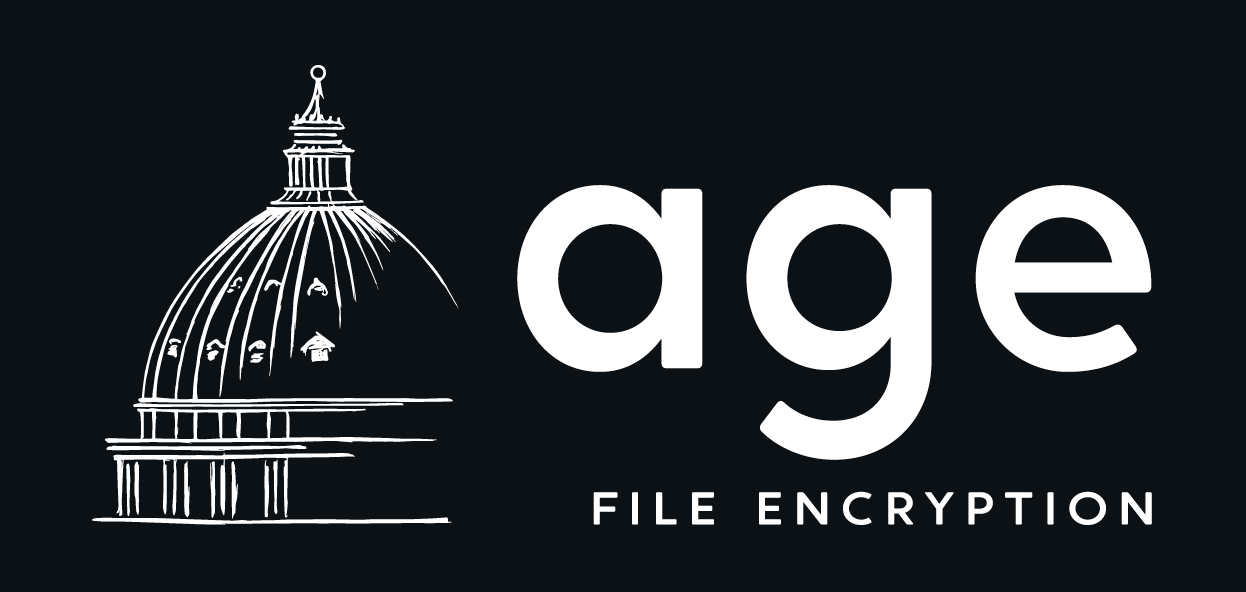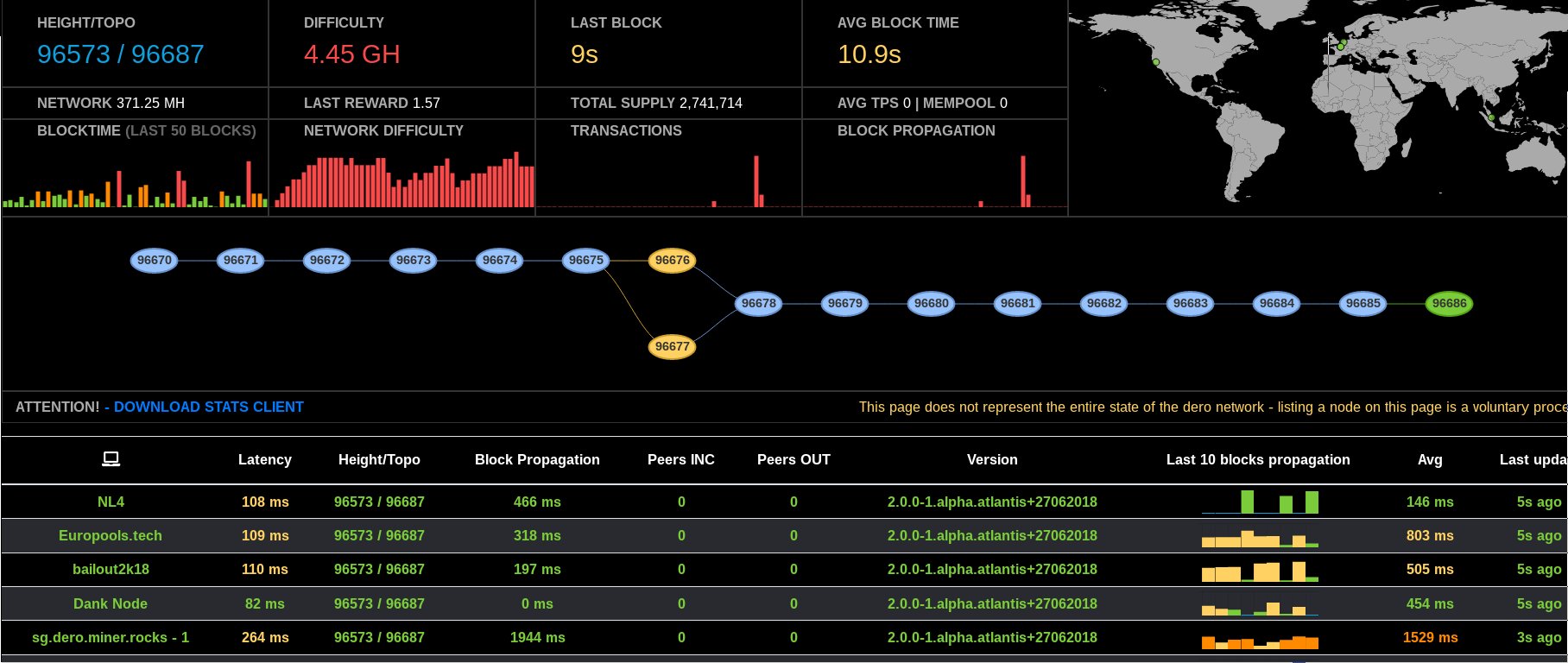A Cryptographic ABE Padlock
This is a simplification of the attribute-based-encryption padlock concept. This implementation is just focusing on getting the language right first, and using BLS Elliptic Curves, so that there are proper point hashes.
This means that we should be able to publicly encrypt to a set of attributes without involving the CA. The CA will only be needed to issue certificates.
The language is in JSON for defining the padlocks, like this:
{
"label": "ADULT",
"fg": "white",
"bg": "black",
"cases": {
"isOwner": {
"key": "Write",
"expr": {
"and": [
{"requires": "isAdultCit"},
{"some": ["email","[email protected]","[email protected]"]}
]
}
},
"isAdultCit": {
"key": "Read",
"expr": {
"and": [
{"some": ["citizenship", "US", "NL"]},
{"every": ["citizenship", "!SA"]},
{"every": ["age", "adult", "driving"]}
]
}
}
}
}
}
Labeled with ADULT with black background and white font. To calculate a Read key, you must be an adult citizen of the right countries, you must be a citizen of US or NL, and not a citizen of SA (to comply with some laws they have). You must be of age adult and age driving. The owner of this file can calculate a Write key as long as his email is [email protected] or [email protected]
When creating the padlock, we must pass in the CA public key, and the target keys Read and Write that we wish to be able to generate. The language is limited to Monotone expressions, where negated facts can be asserted explicitly. When loaded, the some clause flattens out to or logic, and every flattens out to and logic. In some and every, the first token is the field name. This makes it compact to create padlocks with lots of complicated cases. When flattened out into straight logic, the padlock looks like this:
{
"label": "ADULT",
"fg": "white",
"bg": "black",
"unlocks": [
{
"key": "Write",
"and": [
"citizenship:!SA",
"age:adult",
"citizenship:US",
"email:[email protected]"
],
"k": "FDd6RtqWrj1uQ5RC9rws9RKc6N0lob47xOXHxZxcJqc=",
"pubf": "Fi9R0lzDlKHGLL7qqkIStbZr69avMf/M4bcNZRggXJIppK1FAzfVsjxye7hgC4qrAQniQwTUDVBYRPIeBRNEvXTSZIy21sZlOqwKtmSlq/6nGR1DX/b1fDyG2S5WeXOh"
},
{
"key": "Write",
"and": [
"citizenship:!SA",
"age:adult",
"citizenship:US",
"email:[email protected]"
],
"k": "ACxkB5n179Wkk0xo9P16V9lVHx79jtcOnOpUj6VCx34=",
"pubf": "DD69jjZfepc26Zj+9tJ/UhjGfZDWF8qnp/cHpQDH2vS8DFpwh+eAgkNoKcOtzYlzC1II2eg4KVJmZEXHnJ+fW/zXsiDHXxmCYGUAikw3KclgtzMLWIleJjBeHGigRxyr"
},
{
"key": "Write",
"and": [
"citizenship:!SA",
"age:adult",
"citizenship:NL",
"email:[email protected]"
],
"k": "Nb1Chtp7GYRHNNV4oha1QIBshSKPBqhmwp7EmnGIoTI=",
"pubf": "D9dWlTb77epFNjaGeInf9n6O0zjP+Tgf4NS0sOA2U0qNf3kMK0hVGUbShBTxq4cxCPt3NkuzuU+aUlj+9lL/N/+4yNduNaTviyvPU9RKnHmFUagZrE1+ENM4f99M4xNn"
},
{
"key": "Write",
"and": [
"citizenship:!SA",
"age:adult",
"citizenship:NL",
"email:[email protected]"
],
"k": "Kx+T5f8WF0GptbqODHgdHcQ90i123cV1o9hLIds8vSM=",
"pubf": "EuxvLaE8N+qkxIKGxh8U1Exv4+mEVbe1lCnrg5gR1y+H25dTUncXczd1m0/VCOLSFdR4dCdmrwMrZNjghyFGqHwphxAgDkeuZHB4hrOc5/0eafo2+oDy7pS2578PROUw"
},
{
"key": "Write",
"and": [
"citizenship:!SA",
"age:driving",
"citizenship:US",
"email:[email protected]"
],
"k": "QwURJRLGTYDMtSehwvjidEwhl9lEPd9/KfBgc6jmVlY=",
"pubf": "CzvvVvAkFRV+jXkGesQzdYceC8gJgCJKwD1EUJncPJLV/wsVbq9Ai2KM9B6ByDaKEfd5dtMhwsxuW3j9Cj1pm2E8tsx+WNAHEQUGpokC7ZnHV5G0ZmJ40arnCesk1vDZ"
},
{
"key": "Write",
"and": [
"citizenship:!SA",
"age:driving",
"citizenship:US",
"email:[email protected]"
],
"k": "GICp46FXGWXZfyahM2G4dQbkdHrf+nRK2q9RejzMkW4=",
"pubf": "CZ0NQS6zVzs/udCO1cpQZxGz51obQAjSdBOI54WOCc1xGQLiaMFVgjbt8XAia1K2GcQn+gekFgplNJw2N0cU2/Ye3lxsJUPyvQ1bJaPbENJJbe3ewFwcZ1VKwsoOJIMP"
},
{
"key": "Write",
"and": [
"citizenship:!SA",
"age:driving",
"citizenship:NL",
"email:[email protected]"
],
"k": "N0sgh5M3CD1WRMGhKnjBhsf9u6ofP+xcWBdVi2Y1vKs=",
"pubf": "B1hpsByfC7CCmOmpYynXFvn4FNE64T4c4DuHXgIqq2NgiR+Gomzn4Xx0WcKUx1vSAS3n590UwV3IpPuXgtMtAs/R2jSBd3ldp40Oe6rLnZ8zde2Jbn0RUNJvg39S35N6"
},
{
"key": "Write",
"and": [
"citizenship:!SA",
"age:driving",
"citizenship:NL",
"email:[email protected]"
],
"k": "RjaPnSDqxsdwnat+2EmiQP698898t3oZllRw5ryio5I=",
"pubf": "BAmT/Nns6zueHToAIqK/L2Pc6zDfC2Rcb0qf1Xu95VoFbUGP9RU7RDgf9g5OkYidArQ/xPV25uWM3KNxtf+yKtIH1zOKboHzD+InUaJgell1d6rgKYBplUjT5ivrWU8f"
},
{
"key": "Read",
"and": [
"citizenship:!SA",
"age:adult",
"citizenship:US"
],
"k": "CmPULUi1xf5KiUNlOBEooAE8M1jn0DjWLokibeI7wsk=",
"pubf": "D+a4cP6fd7wzLogaxlhLqDlmDPjX3vYLO0FzT/iBiXqoa+gBUNgW0SNw12HTI5ZhElJ8yCsqNJ1hjVAceLY2wDhSxUKjthCdo5wtwAS66yvh9btsnaIAbrTB11mqa5gu"
},
{
"key": "Read",
"and": [
"citizenship:!SA",
"age:adult",
"citizenship:NL"
],
"k": "FZBf6cYmrB6zBKDvjHRMXUvChyokwgD8NQ0H8mEFUaw=",
"pubf": "CNUtet/yxvAoVWoDCXPBm2CeM6rt2xE0FvJA0cY+V/nOGpp6LrZVdstHZhpLUCapFkUEXCRQCTxJYQ7vh2NBjcdjLqaG+iyrxvmWY3Bzoc6uzXUt1+o1MRMOHjDikmZn"
},
{
"key": "Read",
"and": [
"citizenship:!SA",
"age:driving",
"citizenship:US"
],
"k": "Kr3ExslfN2WyH+Rp43yTrrwOKlGbmFPGRUYij9evZ0U=",
"pubf": "AKr0HcoXL4IbQR/s9ItlDmEdE/7M6hJxu9p4bftNmo2pFTsBt7Bxl/ulz/mFKoEfAGGRc8igMw01pbFbvHSIH0ewH/xvOfc/64BU7UzV2p4Qqdky3UJCvdt6hcQH2BJv"
},
{
"key": "Read",
"and": [
"citizenship:!SA",
"age:driving",
"citizenship:NL"
],
"k": "fNNZsX8XyTB2EC5CDTYK4vMjjTCys7dn5yWQqUGydsk=",
"pubf": "F1+iyVRt2NuaCH+hJXVQKal5yopZJ4kj2/rko1zi7tsTLbHX6TtzuTbN4ofrPeheGfh1erAEVbexd3oz1uqdKRVKI5ekuH3cciRzPfn6mMtat/adr8QId/qzlBNg15eI"
}
],
"capub": "EmtgKiWirc0BgesmSuFfaF+cvhxjb6jpCNQ0ouKZKGZDgCGgJtPvhwol1d0LHTbGEdi+BxKsa6aliyftVdJ3PLdeJEZWCJ2WrByytzym2CVNc21iR8ZE3pdCKHikkhQRC3FOU/MgSY2ShluKFyJ5y3fJAjwD3BKzupNP+rWpAZ7srM3ybnChUjgw1TK7p4HXGX7DkeUS7jseNJm11x88pKVx9ANBynH7Y4tF5iH9d9wbiWE3ZFsajPKHE17h9e4S"
}
The various unlock cases require fields and together. The value k is xored with a cryptographic operation on the and items, to produce the actual target key. Each file has a public key pubf that allows padlocks to be created without any certificates, or targeting any particular user.
- When all items in
andare passed through a function, the chosenKeyis ultimately generated.Xor(k, Pair( sum_i[and_i], pubf)) == Readis roughly how it's computed. - This effectively gives us cryptographic enforcement of Read/Write privilege, for monotone (ie:
andandorcombinations with limited negation of individual facts) expressions. This limitation exists because the witnesses are hashes of attributes signed withcapubprivate key.
The pairing swaps s and f. This is a deterministic bit that is xor with another value to yield the key. s G2 is the public key of the CA. f G2 is the public key of the file.
TODO
The CA system still needs to be written, something I have done before in a different project cpabe.
- The certificate will be a curve that includes a bunch of points signed by the CA
- The owner of the certificate doesn't necessarily know all of the points in the certificate, as some may be derogatory
- A padlock can query the certificate for witnesses to values such as a witness of
citizen:NL.
For example, encode each signed attribute into a polynomial. Then use Lagrange polynomials to make the certificate into a (public!) curve. But the points that created the curve can be obfuscated by recreating the curve with just enough points from 0,1,2,3,... to recreate the curve. This offers plausible deniability on derogatory attributes. If the attributes are not publicly guessable, then they can actually be hidden from the user.
Replacing all (X_i,Y_j) with (1,L[1]),(2,L[2]),(3,L[3]),... can hide the original points, while still pinning down the curve. The point (0,L[0]) can be thought of as a hash of the certificate, as this point is determined by the others. The curve ends up being a sort of MAC that we choose some points, and let others be arbitrary. It is a certificate as well.
For example, the CA issues a certificate with points of the form (v,L[v]):
(42,L[42])(55,L[55])(67,L[67])
Where the actual (X,Y) values that the CA generated were used to create the curve. We can then publish the curve like:
(1,L[1])(2,L[2])(3,L[3])
A user presents a list of attributes to be signed:
{
"and": [
"citizenship:US",
"age:adult",
"email:[email protected]"
]
}
Because any three points would produce the same curve with the same (0,L[0]). This means that the X that represents the attribute like H(attribute_i), and Y represents the signed attribute that can only be produced by the CA s H(attribute_i). Padlocks are produced like Pair(f P_0 + f P_1 + ..., s Q), and users unlock them like Pair(s P_0 + s P_1 + ..., f Q). The two ways produce the same value, allowing for the same key to be derived ; because f and s can be swapped in the equation.
The function H1 is a point hash, not a simple hash on the input string. It is a point in G1. It is multiplies times the CA secret s. For each item requested, and possibly more, the CA calculates:
citizenship:US => P_0 = s H1(citizenship:US)
age:adult => P_1 = s H1(age:adult)
email:[email protected] => P_2 = s H1(email:[email protected])
And calculate the polynomial L[x] given the points. Once the points are plugged in, a new set of points L[1],L[2],L[3] can be substituted for the original.
Now, when plugging into a padlock L[ H[citizenship:US] ] can be looked up. Some value will come back. It won't be clear whether that value is correct or incorrect. If it is correct, then it produces the correct key when all attributes are corret. TODO: store a hash of the expected key, so we know when the value is wrong.
To map a string to a point, (L_x[v], L_y[v]) can be defined as a pair. This is the user's certificate that attests to some attributes. H[v] is a scalar normal public hash function, sha256. Map H[v] to L_x[v] and H[v] to L_y[v] independently. Using this, we can map v -> P_v. If any of the values were not signed, then the key will come out wrong.


